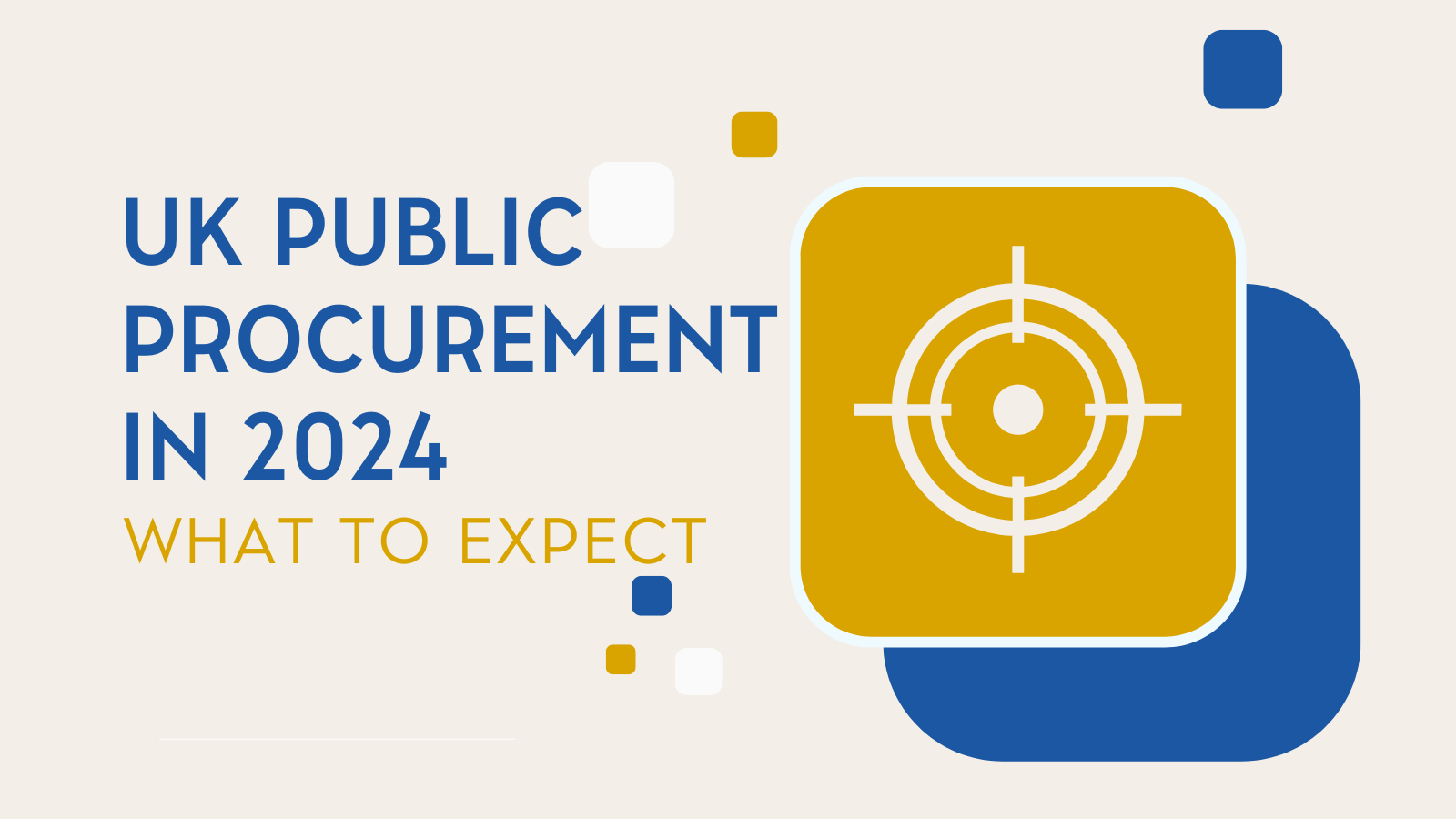As we enter 2024, technology organisations wanting to sell to the public sector should evaluate whether their public sector strategy needs revisiting. 9 times out of 10, we’d say “yes”! Successfully selling to government agencies and other public bodies requires an approach tailored to their needs and procurement processes. As technology takes centre stage in addressing public requirements, suppliers have an opportunity to make strategic adjustments that can significantly boost their success in the public sector.
Understanding the Shifting Public Sector Dynamics
The landscape of the public sector market is ever-evolving. As technology continues to play a pivotal role in addressing public needs, the need for technology suppliers to re-assess and fine-tune their strategies becomes more prominent.
Aligning with Government Priorities
The UK Government has specific priorities and initiatives that guide technology investments. Research the UK Government’s biggest initiatives for the upcoming year and highlight how your offerings directly help address them. Whether it’s healthcare, education, infrastructure, or sustainability, demonstrating how your technology addresses key public sector challenges will resonate more effectively with decision-makers.
Embracing Tech Acceleration
While historically the public sector has been perceived as slow in adopting new technologies, recent years have seen an acceleration of digital transformation initiatives. Governments worldwide are allocating significant funding and resources towards modernising systems, digitising services, leveraging cloud computing, and utilising data analytics and AI. The COVID-19 pandemic further demonstrated the importance of technology capabilities for public sector continuity and resilience. By keeping pace, you can offer innovative solutions that resonate with the government’s growing reliance on digital innovation.
Prioritising Interoperability
As the public sector relies more heavily on technology, there’s also an increasing need for seamless interoperability between different systems. Tech suppliers should evaluate their solutions’ compatibility with existing infrastructure and prioritise interoperability features. This not only eases the integration process but positions your offerings as forward-thinking and supportive of the public sector’s goal for interconnected and efficient services.
Updates to Policies and Regulations
Rules and regulations governing the public sector are subject to frequent changes. By proactively tracking regulatory and policy developments, technology suppliers can assure public sector buyers see them as reliable partners. Evolving regulations around areas like data privacy and cybersecurity can heavily impact commercial strategies and product roadmaps. For example, we’re now seeing more rigorous security standards for technology vendors working with sensitive public sector data. We recently wrote an article on which procurement rules and regulations suppliers need to know – a great place to start! Take a read here.
The policy at the forefront currently is the Procurement Act. Changes were announced in October 2023, coming into play in late 2024. You can find out how this particular policy change affects suppliers here. Adapting your approach to align with such changes ensures compliance and streamlines your interaction with government bodies.

Social Value
Social responsibility and ethical business practices are valued highly across the public sector. The UK Social Value Act 2012 requires public sector organisations to consider how they can secure wider social, economic, and environmental benefits in their procurement activities. Suppliers must be able to demonstrate how their proposals will deliver social value, and be able to provide evidence to support their claims. Public sector bodies want to see your plan for things like Net Zero before awarding contracts. This is likely to intensify with the Government’s newly released Energy Plan.
A supplier’s social values can positively influence their success, positioning them as forward-thinking partners rather than mere vendors. You can learn a bit more about how social value ties into the public sector in our ‘Public sector bids and social value’ blog post here.
Evolving budgets
The financial landscape of the public sector is in constant flux. We’re seeing shifting budget allocations with changes to the economy and digital transformation priorities. For example, as digital transformation remains high on the agenda, technology budgets for areas like cloud adoption, cybersecurity, and AI may see expansion. This signals an opportunity to focus sales and marketing around offerings tailored to these growing areas of spend.
It’s worth taking a look at the spend data to find out where the money is going. Involving this data in your strategy can help inform your decisions and focus your efforts. We have our own user friendly spend data tools for both the G-Cloud and Digital Outcomes and Specialists frameworks!
Preparing for Political Shifts
With public sector technology procurement intrinsically tied to political cycles, suppliers should account for any upcoming elections or leadership changes in their planning. It’s important to stay in the know on these matters, in case priorities and objectives change! Flexibility and adaptability are key in navigating this aspect of the public sector landscape.
Leveraging Key Trends
Cloud Computing
Government organisations are progressively adopting cloud computing solutions to enhance efficiency, scalability, and cost-effectiveness. Key trends include the rise of hybrid cloud solutions, the incorporation of edge computing for real-time data processing, and an increased focus on cybersecurity in cloud environments.
Artificial intelligence
Governments are exploring AI applications to improve decision-making, citizen services, and operational efficiency. Trends include the use of predictive analytics for resource optimisation, AI-powered automation to streamline tasks, and the integration of Natural Language Processing (NLP).
In January, guidance was published on Generative AI in the UK Government. It aims to ensure the technology is being adopted safely and ethically, and that skills progress along with it. Read the full guidance PDF here.
Cybersecurity
Given the escalating frequency and sophistication of cyber threats, the public sector is prioritising robust cybersecurity measures. Key areas of focus include adopting a Zero Trust approach, which involves verifying every user and device to enhance overall security. We’re also seeing an increase in advanced threat detection using AI and machine learning to identify unusual patterns and threats, alongside cloud security and supply chain security.
Strengthening your commitment to data security and privacy can place you above other suppliers. Buyers will likely be confident in proceeding with a contract with you if you clearly articulate how your technology safeguards sensitive information.
Competitive Edge
After all we’ve covered in this article, it goes without saying that identifying your competitive edge will be the key to an effective public sector strategy. This market is hugely competitive, and you should explore strategies that highlight your unique value proposition.
We’ve provided many an idea of how you might adapt your strategy. Trying to meet all these criteria all at once, especially the technological trends, will do nothing but hinder your performance. Strip it back to what you do best as an organisation, before thinking about what you can do as a supplier to the public sector market.
Reviewing existing supplier-buyer relationships may also help you to understand what is lacking. Again, take a look at what is being procured via the spend data. There are a lot of ways it can be used!
The answer to the question of whether to fine-tune your public sector strategy for 2024 is a resounding “yes.” As technology reshapes the public sector landscape, organisations must adapt to stay relevant and competitive. Fine-tuning does not require dramatic business model overhauls. Rather, savvy suppliers can make incremental improvements to strategy, positioning, and commercial offerings. By staying proactive, tech organisations can position themselves not just as vendors but as strategic partners, contributing to innovation and progress within the public sector.
There’s lots to come in 2024 – a great next step in your reading from here is our ‘UK Public Procurement in 2024: What to Expect’ article, where you’ll find more in-depth insight into policy changes, threshold updates, and other key trends.




